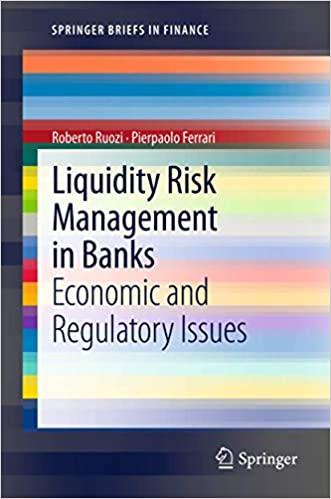Question
Golden Corp. is a young start-up company and therefore is not paying any dividends on the stock over the next 6 years. However, the following
Golden Corp. is a young start-up company and therefore is not paying any dividends on the stock over the next 6 years. However, the following year, the company will start paying a dividend of $23 per share (at the end of the year following year 6) and thereafter it will increase the dividends by 6% per year forever. If the required rate of return on this stock is 16%, what is the current (todays) share price?
Do not use the $ sign. Use commas to separate thousands. Use to decimals. Round to the nearest cent. For example if you obtain $1,432.728 then enter 1,432.72; if you obtain $432 then enter 432.00
All projects (A to G) are 7-year projects. NPV = Net present value. IRR = internal rate of return. MIRR = modified internal rate of return. PI = profitability index.
Criteria: Project_A Project_B Project_C Project_D Project_E Project_F Project_G
NPV= $137,083 $31,290 $6,016 $7,647 ($584) $12,521 $9,214
IRR= 31.80% 48.34% 12.03% 11.30% 9.94% 26.79% 37.87%
MIRR= 18.52% 23.52% 10.62% 10.59% 9.97% 23.53% 20.76%
PI= 1.69 2.25 1.040 1.038 0.999 2.25 1.92
The discounting rate (r) is 10%.
Which of the following 10 statements are false/incorrect (there are several, select all that apply). Consider each statement on its own separate from the others listed:
Question 8 options:
- If all projects are mutually exclusive, under the IRR rule projects A, B, C, D, F and G should be taken
- If projects A & B are mutually exclusive, projects C and D are also mutually exclusive (all others are independent), under the IRR rule projects B, C, and G should be undertaken
- If projects A & B are mutually exclusive, projects C and D are also mutually exclusive and projects F and G are also mutually exclusive (all others are independent), under the NPV rule projects A, D, and F should be undertaken
- If all projects are mutually exclusive, under the IRR rule only project B should be taken
- If all projects are mutually exclusive, under the PI rule only projects B and F should be taken
- If all projects are independent, under the NPV rule, projects A, B, C, D, F, and G should be taken
- If projects A & B are mutually exclusive, projects C and D are also mutually exclusive and projects F and G are also mutually exclusive (all others are independent), under the MIRR rule projects B, C, and F should be undertaken
- If projects A & B are mutually exclusive, projects C and D are also mutually exclusive and projects F and G are also mutually exclusive (all others are independent), under the PI rule projects A, D, and F should be undertaken
- If all projects are independent, under the PI rule, all projects should be taken
- If only projects E and F are mutually exclusive, under the NPV rule only project A should be taken
Step by Step Solution
There are 3 Steps involved in it
Step: 1

Get Instant Access to Expert-Tailored Solutions
See step-by-step solutions with expert insights and AI powered tools for academic success
Step: 2

Step: 3

Ace Your Homework with AI
Get the answers you need in no time with our AI-driven, step-by-step assistance
Get Started


